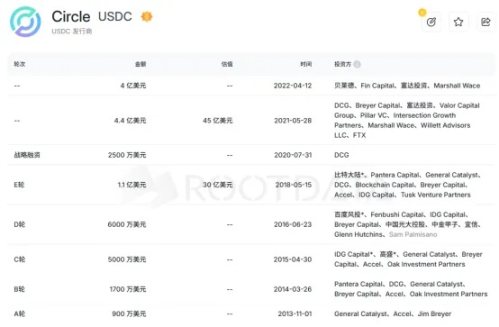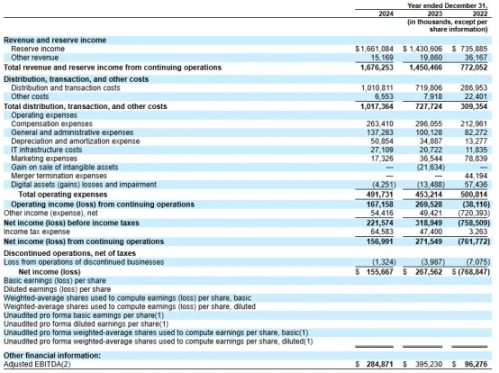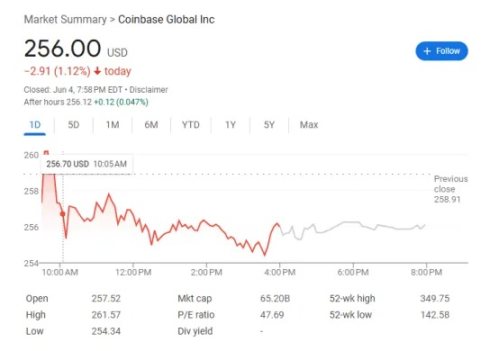Theoretical significance is a subjective product; the market's attitude is fundamental. Whether it is truly valuable or just capital cashing out can only be explained by Circle's curve on the first day of listing.
Written by: Tuo Luo Finance
The U.S. is heavily investing in stablecoins, with various parties gathering strength, but the first to take the plunge is the veteran Circle.
On June 5, Eastern Time, following Coinbase, the most anticipated IPO is here. Circle will officially become the first stablecoin company to be listed on the New York Stock Exchange, marking a perfect conclusion to its 7-year IPO journey.
According to the latest data, Circle completed its IPO on the New York Stock Exchange at $31 per share, exceeding the original expected pricing range ($24-$26), raising $1.1 billion, with the stock code "CRCL." Due to surging demand, the originally planned issuance of 24 million shares was expanded to over 34 million shares.
The optimism in the capital market is evident, and for the industry, Circle's listing is far more than just selling stocks.
Although Circle is well-known in the crypto space, it may still feel somewhat distant for those outside the circle. Founded in 2013 and headquartered in Boston, Circle started as a consumer finance startup in the U.S., initially providing storage and currency exchange services for the virtual currency Bitcoin. However, as the market changed, its business evolved repeatedly, from a crypto wallet to an exchange, and ultimately, the only core product that survived the market shakeout is the USD Coin (USDC). As a homegrown U.S. dollar stablecoin, USDC has relatively more compliance restrictions and is favored by local users compared to the globally prominent USDT. In the stablecoin sector, it has consistently ranked second, with a current circulation of approximately $61 billion, holding a market share of 27%, second only to the leading USDT.
From a developmental perspective, Circle can be considered a capital darling born with a golden key. As early as 2013, it caught the attention of General Catalyst, setting a record for cryptocurrency companies with $9 million in Series A funding. It subsequently attracted large capital players like Goldman Sachs, IDG, and DCG, and even Chinese capital made an appearance, with Baidu Ventures, Everbright Holdings, CICC, and Yixin participating in its Series D funding. However, due to well-known regulatory issues later on, Circle's business entity in China, Tianjin Shike Technology Co., Ltd., was simply deregistered in 2020. Interestingly, after the IPO news of Circle was released, the stock price of China Everbright Holdings rose by 44% in five days, marking a tear of the era left by Circle in China.

Despite the luxurious capital backing, Circle's path to listing has not been smooth sailing. In 2018, after completing Series E funding with a valuation of $3 billion, Circle had preliminary thoughts about an IPO, planning to stand out with "compliance + listing + transparency." However, less than a year into the preheating phase, the sudden market crash in 2019 caused Circle's valuation to plummet from $3 billion to $750 million, shattering its IPO dreams for the first time.
In 2021, Circle revisited the path to listing. To avoid compliance scrutiny, Circle planned to go public through SPAC (Special Purpose Acquisition Company) Concord Acquisition Corp, with a valuation of $4.5 billion. However, the SEC intervened at this time, announcing an investigation into the securities nature of USDC, causing Circle's IPO to once again collapse midway.
Three years later, in January 2024, after learning from various lessons, Circle submitted its IPO application in an unusually low-key manner to reduce inquiries and comments from regulatory agencies and the media. Finally, on April 2 of this year, Circle submitted its S-1 filing to the SEC, officially starting the IPO process, with plans to list on the New York Stock Exchange. Interestingly, in early May, Bloomberg reported that Ripple had made an acquisition request to Circle, which was ultimately rejected due to a low offer. Shortly thereafter, The Block also reported that Circle was actively seeking buyers in connection with Coinbase and Ripple, with a valuation of at least $5 billion. Due to the continuous rumors of sale, the market speculated that Circle was pursuing a dual strategy, advancing both the IPO and sale simultaneously, aiming to capitalize on favorable conditions.
On May 27, Circle denied the sale rumors. On the same day, Circle officially submitted its listing application to the New York Stock Exchange. According to the disclosed prospectus at that time, Circle planned to issue 24 million Class A shares, of which 9.6 million shares would be issued by the company and 14.4 million shares would come from existing shareholders, with an expected pricing range of $24 to $26 per share, underwritten by JPMorgan and Citigroup.
On June 5, Circle will officially debut on the NYSE, completing its trading debut. From the latest disclosed data, Circle achieved 25 times oversubscription, ultimately increasing the number of shares issued from 32 million to 34 million. The expected price per share is $31, not only higher than the expected range of $27-$28 but also a significant leap from the initial range of $24-$26. Based on this price, Circle's total valuation reached $6.2 billion, and if potential dilution factors such as employee stock ownership plans, restricted stock units (RSUs), and warrants are included, the fully diluted valuation would be approximately $7.2 billion. Although this is still a considerable gap compared to the company's envisioned $9 billion in 2022, from the market's perspective, even in the current relatively tight liquidity environment, Circle's valuation appears quite healthy in the crypto field, where valuations often reach billions.
The data in the prospectus also illustrates this point. As previously mentioned, Circle's USDC issuance scale is approximately $60 billion, which, while significantly lower than USDT's $150 billion, holds a clear advantage over the third-place competitor with less than $10 billion in scale. Against the backdrop of the ongoing U.S. stablecoin legislation, this sector still has long-term growth potential.
However, from a business model perspective, Circle faces significant risks. In terms of revenue, Circle's total revenue in 2024 is projected to be $1.676 billion, a year-on-year increase of about 16%, with approximately 99.1% of revenue coming from interest income generated by USDC reserve assets, amounting to $1.661 billion, while other income is $15.169 million. It is evident that the risk-free interest margin is essentially Circle's core source of income, but this is clearly based on a backdrop of macroeconomic tightening and high interest rates. If a rate-cutting cycle begins in the future, its income will be affected. In other words, Circle is strongly correlated with systemic cycles, thus facing the possibility of systemic risk spillover.

On the other hand, despite reaching $1.6 billion in revenue, Circle's disclosed net income is only $156 million, with the missing $1.45 billion attributed to seemingly negligible issuance costs. Many people believe that the cost of large-scale on-chain token issuance approaches zero, but while issuing tokens may be costless, in the current ecosystem, issuance is a technical task that heavily relies on the network effects of large exchanges. Breaking down its issuance costs, Coinbase is the largest partner, taking a cut of $900 million from Circle's profits, accounting for 54.18% of Circle's annual revenue. At the same time, Circle's collaboration with Binance allows USDC to participate in Binance Launchpool, with a one-time payment of $60.25 million for the exchange cost, and as long as Binance holds no less than $1.5 billion in USDC, it will provide monthly incentives based on its USDC custody balance for the next two years. This clearly shows that Circle's bargaining power in profit composition is relatively weak, and profits are thus squeezed by exchanges and other competitors.
However, valuation is subjective, and some believe that since 14.6% of Coinbase's revenue comes from USDC-related earnings, with Coinbase's current market value at about $65 billion, Circle's valuation should be at least above $10 billion. In fact, Circle itself seems to have this intention, as previously leaked rumors indicated that Circle's intended offer during negotiations with Coinbase and Ripple was between $9 billion and $11 billion, but both parties clearly rejected this.

Overall, Circle's valuation is reasonable, and in this context, institutions are eager to extend olive branches. According to a document from the U.S. Securities and Exchange Commission, Cathie Wood's ARK Investment Management has expressed interest in purchasing up to $150 million in stock. On the other hand, asset management giant BlackRock also plans to acquire about 10% of the IPO shares. It is worth noting that both had reached a cooperation agreement as early as March this year, with Circle entrusting at least 90% of its dollar custody reserves (excluding bank deposits) to BlackRock for management, with the return being that BlackRock would not issue its own stablecoin. This move is indeed very wise, as it not only secures strong support from traditional institutions, facilitating the opening of future sales channels, but also cleverly avoids potential competition from traditional asset management businesses that come with their own traffic.
On the other hand, Circle's obsession with listing has also led the market to harbor doubts about cashing out, believing that Circle's move is merely to allow large capital to exit smoothly, benefiting Wall Street capital rather than truly benefiting retail holders. From the current perspective, this point still seems somewhat thin. First, as early as 2018, Circle's valuation reached $3 billion, and the subsequent $440 million financing in 2021 was also based on a valuation of $4.5 billion. It can be argued that the vast majority of investors had already invested at a relatively high valuation, so even with a total valuation of $7.2 billion now, it is not an exorbitant return for early investors who have been in the race for many years. Second, unlike Coinbase's direct listing previously, Circle adopted a conventional IPO approach, meaning early investors and insiders cannot sell their shares within the first 180 days, at least not allowing retail investors to act as exit liquidity in the short term. From the speculation before the listing, against the backdrop of already oversubscribed shares, most industry insiders believe Circle will perform well.
Regardless of the performance, this is another milestone event for both Circle and the industry. For Circle, the IPO not only alleviates financial pressure but also officially positions it within the capital game, creating a core driver for future operations and development, further enabling global expansion. It successfully seizes an ecological niche from the long-term predictable U.S. stablecoin landscape, gaining a cyclical advantage.
For the industry, the impact is even more profound. What appears to be the listing of a stablecoin company is, in fact, a concentrated reflection of the U.S. response to prioritization strategies. Among all stablecoin issuers, Circle stands out for its compliance, as evidenced by its previous acquisition of a BitLicense from New York State. Based on this standard, following this IPO, USDC is expected to become the first stablecoin compliant with U.S. stablecoin legislation requirements, further establishing itself as a hard currency and stablecoin exchange model, thereby constructing a compliant circulation mechanism for stablecoins. In this context, compliant stablecoins will officially connect with the banking and Wall Street systems, with the U.S. dollar stablecoin becoming a core carrier linking the global crypto space. This aligns with the U.S. intention to advance stablecoin legislation, with the dollar serving as a stabilizing force bridging traditional finance and crypto finance, once again reshaping dollar hegemony on a global scale. In the long run, as stablecoins continue to develop, cross-border payments may detach from the banking account system, relying on stablecoins for settlement, which could potentially impact the existing global settlement system.
Additionally, some analysts believe that Circle's IPO has also stimulated the DeFi market. As Circle's valuation rises, businesses or projects closely related to stablecoins may also see growth. In other words, Circle could become a valuation anchor in the DeFi space.
Theoretical significance is a subjective product; the market's attitude is fundamental. Whether it is truly valuable or just capital cashing out can only be explained by Circle's curve on the first day of listing.
免责声明:本文章仅代表作者个人观点,不代表本平台的立场和观点。本文章仅供信息分享,不构成对任何人的任何投资建议。用户与作者之间的任何争议,与本平台无关。如网页中刊载的文章或图片涉及侵权,请提供相关的权利证明和身份证明发送邮件到support@aicoin.com,本平台相关工作人员将会进行核查。




